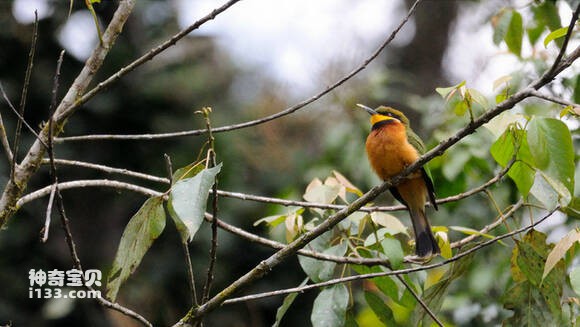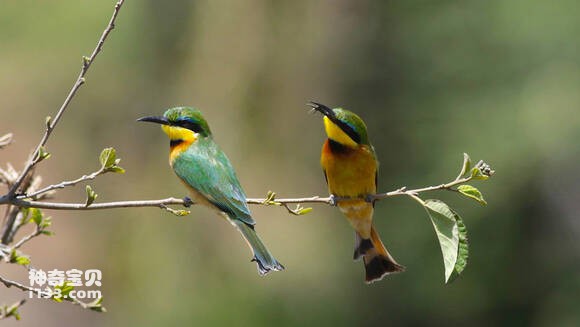Merops oreobates
IUCN
LCBasic Information
Scientific classification
- name:Merops oreobates
- Scientific Name:Merops oreobates,Cinnamon-chested Bee-eater
- Outline:Climbing birds
- Family:
Vital signs
- length:About 21 cm
- Weight:25-29g
- lifetime:No textual research information is available
Feature
Distribution and Habitat
It is distributed in Burundi, the Democratic Republic of the Congo, Kenya, Rwanda, South Sudan, Sudan, the United Republic of Tanzania, Uganda.
Inhabits wooded hillsides, forest edges, fir forests, clearings covered with bracken forests.
Appearance
Red-breasted mee-eaters are small climbers. It is 21 cm long and weighs 25-29 grams. The body is gorgeously feathered. The upper body is green, with wide eye lines like a black eye patch, the cheeks are white, and the yellow throat and black chest band are often bordered by a very narrow dark blue band. The chest is orange red, the abdomen orange yellow. Horny beak, fleshy claws.
The beak is slender and curved sideways. The wings are long and pointed. The tail is long, with 12 tail feathers, some species have square tail, and some species have elongated and pointed tail feathers. Caudal lipid gland is naked. The front toe base is amalgamated, and the hind claw is shorter than the middle claw.
Details
It is known as Merops oreobates and Cinnamon-chested Bee-eater.

Red-breasted bee-eaters are typical forest birds. Travel alone, in pairs or in groups. They fly and forage among the branches and flowers in the canopy. Resting on top of high branches. It often takes off from the top of a tree, then curves down, or spins back and forth over the canopy, flying and Shouting. Most of the day is spent in the air, flying straight and fast, with rapid flapping of the wings, sometimes accompanied by gliding. Sometimes into the cottage, house behind the house and orchard activities, rest on the wire, dead branches or shrubs. Bee-eaters are quick flyers and good at hunting on the fly, but their food varies by location and season. In addition to bees, they also prey on insects such as weevil, ulmus, flies, dragonflies, termites, butterflies and crustaceans.

The breeding season is usually from February to April in central Kenya, but from October to January in eastern Africa and much of the rest of the country, usually shortly after the rainy season. Cluster breeding, often hundreds of pairs in the same nest area, generally in the high embankment hole for the nest, often dug in the bank wall of the forest canyon or the steep wall beside the slope of the mountain road, also often nested in the tunnel of the mountain grave. Each clutch lays 5-6 eggs, white with a pinkish tint, about 26×22 mm in size, ovoid very nearly spherical. The incubation period is 20 days, and the male and female birds take turns to carry out nesting, brooding and brooding tasks. Nestlings are late creatures.
Listed on the International Union for Conservation of Nature (IUCN) 2013 Red List of Threatened Species ver 3.1 - Low Risk (LC).
Protect wild animals and eliminate wild meat.
Maintaining ecological balance is everyone's responsibility!








